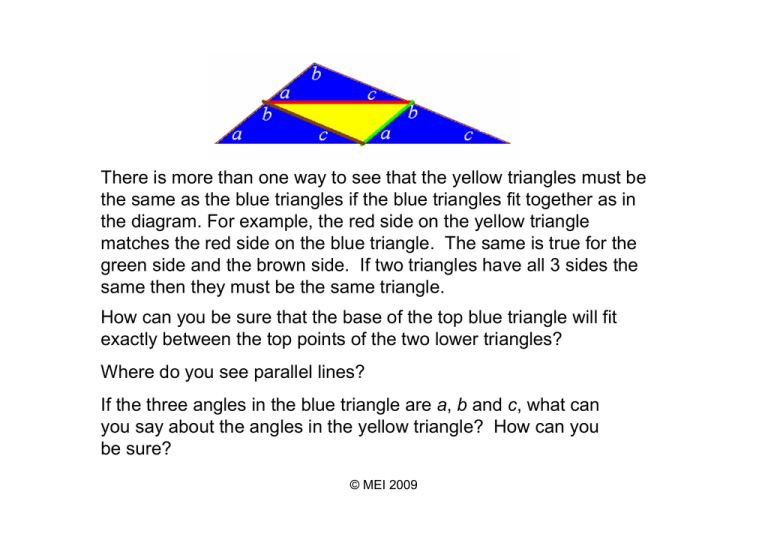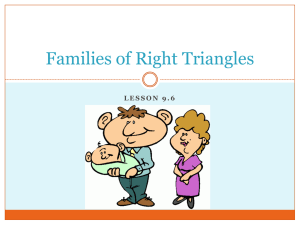There is more than one way to see that the... the same as the blue triangles if the blue triangles...
advertisement

There is more than one way to see that the yellow triangles must be the same as the blue triangles if the blue triangles fit together as in the diagram. For example, the red side on the yellow triangle matches the red side on the blue triangle. The same is true for the green side and the brown side. If two triangles have all 3 sides the same then they must be the same triangle. How can you be sure that the base of the top blue triangle will fit exactly between the top points of the two lower triangles? Where do you see parallel lines? If the three angles in the blue triangle are a, b and c, what can you say about the angles in the yellow triangle? How can you be sure? © MEI 2009 Teachers’ notes 1 Links to •Proof •Angles associated with parallel lines. Possible questions to ask about the original diagram: • Where do you see parallel lines? How can you be sure? • Where do you see equal angles? How can you be sure? © MEI 2009 Teachers’ notes 2 • • If a row of blue triangles is placed on a horizontal base then the top points must also be horizontal as the height of each triangle is the same. To be sure that the distance between these top points is equal to the base of the blue triangle, you need to show that the yellow triangles are the same as the blue ones. Knowing that the angles of a triangle add up to 180° will show that the angles of the yellow one are the same as the ones of the blue one. The two sloping sides of the yellow triangle must also be the same as the sides of the blue one. Does this guarantee that the triangles are the same? © MEI 2009






